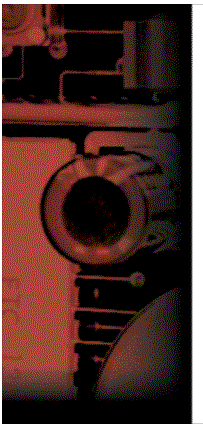



 |
 |
Course No. 1153 - Two days - Instructor-led
Overview of Microsoft Exchange Collaboration Development
Table of Contents
Introduction
At Course Completion
Microsoft Certified Professional Exams
Prerequisites
Course Materials and Software
Course Outline
This course provides students with an introduction to the Microsoft®
platform of technologies for developing powerful collaboration solutions.
The primary focus of this course will be on explaining the platform,
developing noncoding collaboration solutions, and developing form-based
solutions. This course should be considered a step toward technical
certification.
Return to top
At the end of the course, students will be able to:
- Describe the components of collaboration applications.
- Name the types of collaboration applications that can be created.
- Name the instant collaborations available from within the Microsoft
Outlook™ messaging and collaboration client.
- Describe how Outlook integrates with Microsoft Exchange Server and
with public folders on Exchange Server to accomplish collaboration
applications.
- Create and customize an instant collaboration by using Outlook
built-in modules.
- Customize and configure an Outlook form, including creating or
adding fields, adding controls, integrating Microsoft Office 97
documents, and applying actions.
- Describe the Web development tools and their features.
- Describe the Active Server Pages (ASP) object model, as well as the
functionality of each object within the model.
- Deploy an application by distributing forms and granting appropriate
permissions.
Return to top
This course will help the student prepare for the following Microsoft
Certified Professional exam(s):
- There is no Microsoft Certified Professional exam that maps to this
course.
Return to top
- Familiarity with the Outlook user interface
- Background in programming logic (not essential, but recommended)
- Experience with the Microsoft Visual Basic® programming system (not
essential, but recommended)
- Basic hypertext markup language (HTML) proficiency
The course materials, lectures, and lab exercises are in English. To
benefit fully from our instruction, students need an understanding of the
English language and completion of the prerequisites.
Return to top
The course workbook and lab book are yours to keep.
You will be provided with the following software for use in the
classroom:
- Microsoft Windows NT® Server network operating system version 4.0
with Service Pack 3
- Microsoft Exchange Server Enterprise Edition version 5.5
- Microsoft Office Professional
Return to top
Day 1
Module 1: Introduction to Collaboration Applications
Topics:
Introduction to collaboration applications
Types of collaboration applications
Lab:
Using a collaboration application
Demonstrations:
Contacts application
Job Candidates application
Help Desk application
Web Sites Reference application
Skills:
Students will be able to:
- Define collaboration applications.
- Explain the difference between synchronous and asynchronous
applications.
- Name and describe the components of collaboration applications.
- Name the collaboration application types, and describe an example
application for each type.
Module 2: Microsoft Collaboration Application Platform and Tools
Topics:
Microsoft collaboration application platform
Microsoft Exchange Server platform for collaboration applications
Microsoft Outlook messaging and collaboration client
Collaboration application active platform
Lab:
Using Outlook Web Access
Demonstration:
Outlook Web Access
Skills:
Students will be able to:
- List and describe each component of the collaboration application
platform.
- Describe how Outlook integrates with Exchange Server and its public
folders to accomplish collaboration applications.
- Define instant collaborations, and describe each built-in module.
- Describe and use the Microsoft Active Platform for collaboration
applications.
Module 3: Creating and Managing Outlook Folders
Topics:
Creating folders with Outlook
Planning and organizing folders
Creating folder rules and views
Labs:
Creating an instant collaboration application
Creating folders and views for the Project Planning application
Demonstration:
Creating a rule
Skills:
Students will be able to:
- Moderate a public folder and explain the rules used to enable folder
moderation.
- Describe the general planning steps for folders.
- Plan and create a custom folder application containing custom
fields, views, and rules.
Day 2
Module 4: Creating and Customizing Outlook Forms
Topics:
Outlook form fundamentals
Using the Outlook form designer
Additional form designer features
Labs:
Creating the Project Tracking application main form
Creating additional forms for the Project Tracking application
Skills:
Students will be able to:
- Describe the features of the Outlook form designer, and use the
Outlook form designer to create a form.
- Customize and configure an Outlook form, including creating or
adding fields, adding controls, and using Read and Compose pages.
- Integrate Microsoft Office 97 documents in a form and apply actions
to forms.
Module 5: Building Collaboration Applications for the Web
Topics:
Introduction to Web development tools
Introduction to Microsoft Visual Basic Scripting Edition (VBScript)
Active Server Pages object model
Using the ASP object model
Using ASP
Collaboration data object overview
Lab:
Creating active server pages that use collaboration data objects
Skills:
Students will be able to:
- List and describe all of the Web development tools available with
the collaboration application platform.
- Recognize VBScript syntax, and explain the functionality provided by
VBScript.
- Explain the functional benefits provided by ASP, and describe and
use Global.asa files and virtual directories.
- Describe the ASP object model, and explain the functionality
provided by each of the five objects in the model.
- Name and describe the functionality of the two collaboration data
object (CDO) libraries.
Module 6: Overview of Application Management and Deployment
Topics:
Using the Exchange Server scripting agent
Form management overview
Deploying collaboration applications
Lab:
Using Event Scripting Service
Skills:
Students will be able to:
- Configure folder agents and link a script to a folder event.
- Use form definitions and a form cache.
- Deploy an application by distributing forms and granting appropriate
permissions.
Return to top
|
 |

